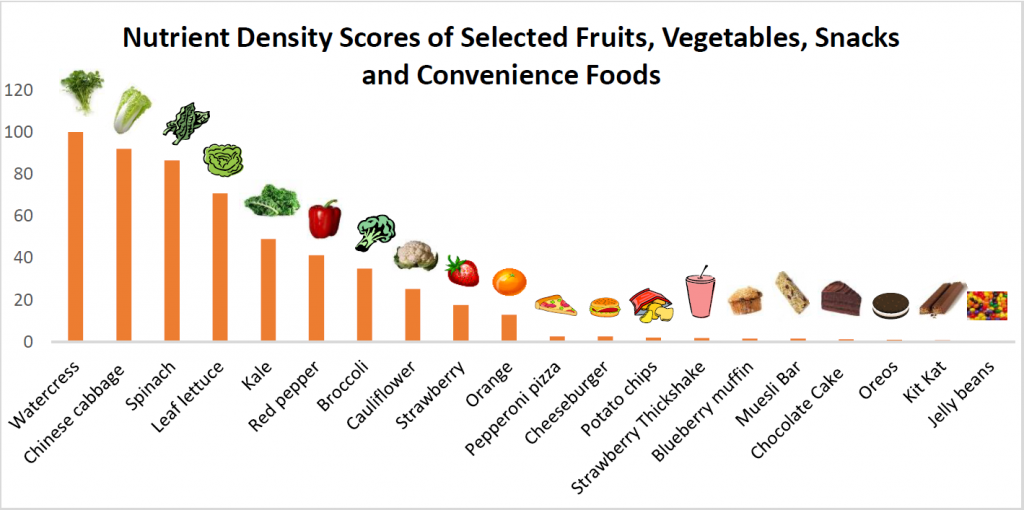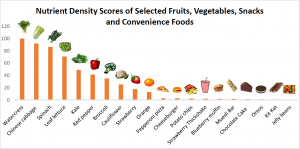Fruits and vegetables are highly nutritious and great for our health because they provide us with a concentrated source of vitamins, minerals and other nutrients. However, they are only a small source of energy (calories).
Recently there has been a lot of talk about Powerhouse Fruits and Vegetables (PFV) which are strongly associated with reductions in the risk of developing chronic diseases such as diabetes, heart disease, arthritis and cancer. Typically these are yellow and orange OR green, leafy, cruciferous (from the cabbage family) vegetables.
A recent CDC study developed a classification scheme for PFV based on nutrient density the number of nutrients the food contains relative to how many calories it provides. Any food which scored higher than 10 was classified as a PFV. Some of the top results included
- Watercress (100)
- Spinach (86.43)
- Lettuce (70.73)
- Kale (49.07)
- Red pepper (41.26)
- Broccoli (34.89)
- Cauliflower (25.13)
- Strawberries (17.59)
- Oranges (12.91)
Taste is highly related to energy density. The most desired foods provide a concentrated source of energy such as cakes, biscuits and refined carbohydrates which makes sense from an evolutionary perspective when food was not always available and obtaining high energy foods was crucial for survival. With an abundance of food often available 24/7, however, modern day diets often feature excess consumption of energy-dense, nutrient-poor foods, greatly contributing to the global obesity epidemic.
Using the same formula used to classify PFV, we compiled a list of common snack/convenience foods to see how they measure up. The results are, unsurprisingly, fairly dismal:
- Slice of pepperoni pizza (2.61)
- Cheeseburger (2.61)
- Potato chips (1.92)
- Blueberry muffin (1.61)
- Muesli bar (1.58)
- Oreo cookie (0.95)
- Kit Kat chocolate bar (0.85)
- Jelly beans (0.05)
In the world of highly manufactured, processed foods, we seem to have forgotten that food exists to nourish our bodies. The implications for our health and well-being of consuming nutritious foods over those that are highly processed, energy-dense and nutrient-poor are immense and should be considered whenever we ask the question, what will I eat today?
Image Source: the Vitality Institute. Click to enlarge.
What did you eat today, and where did it fall on the scale of nutrient density? Take part in the conversation on Twitter by tagging @VitalityInst.







